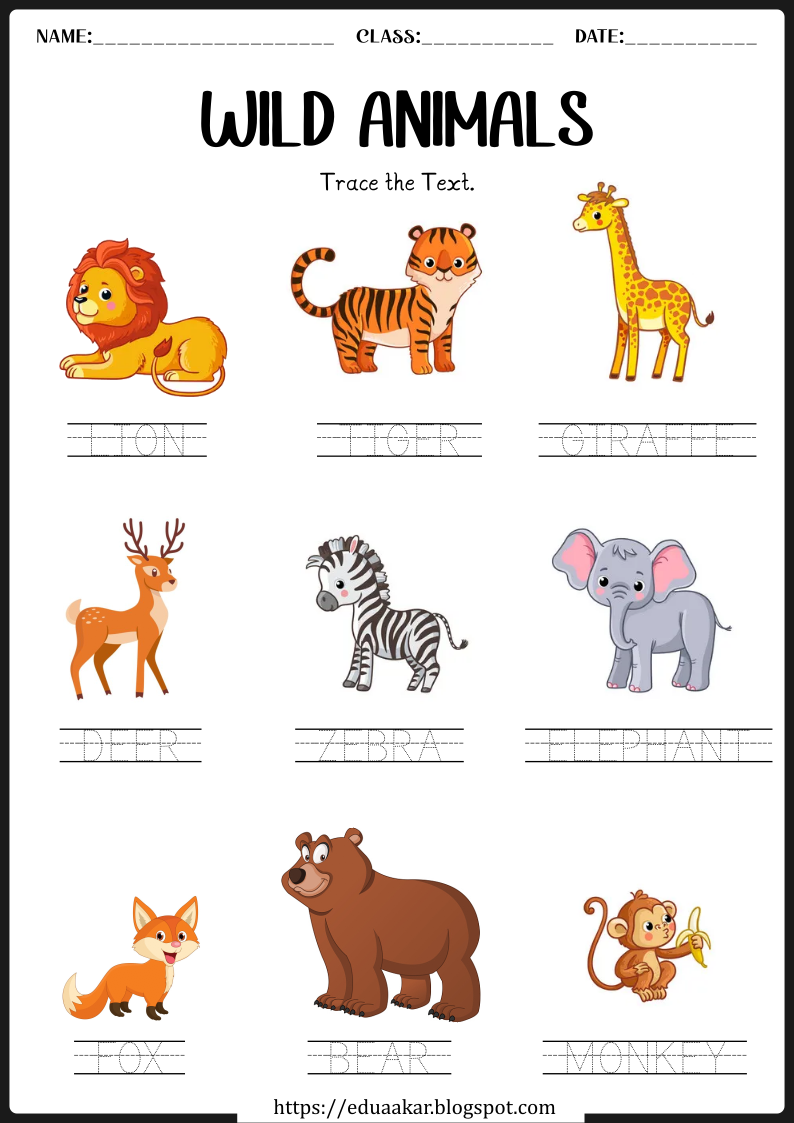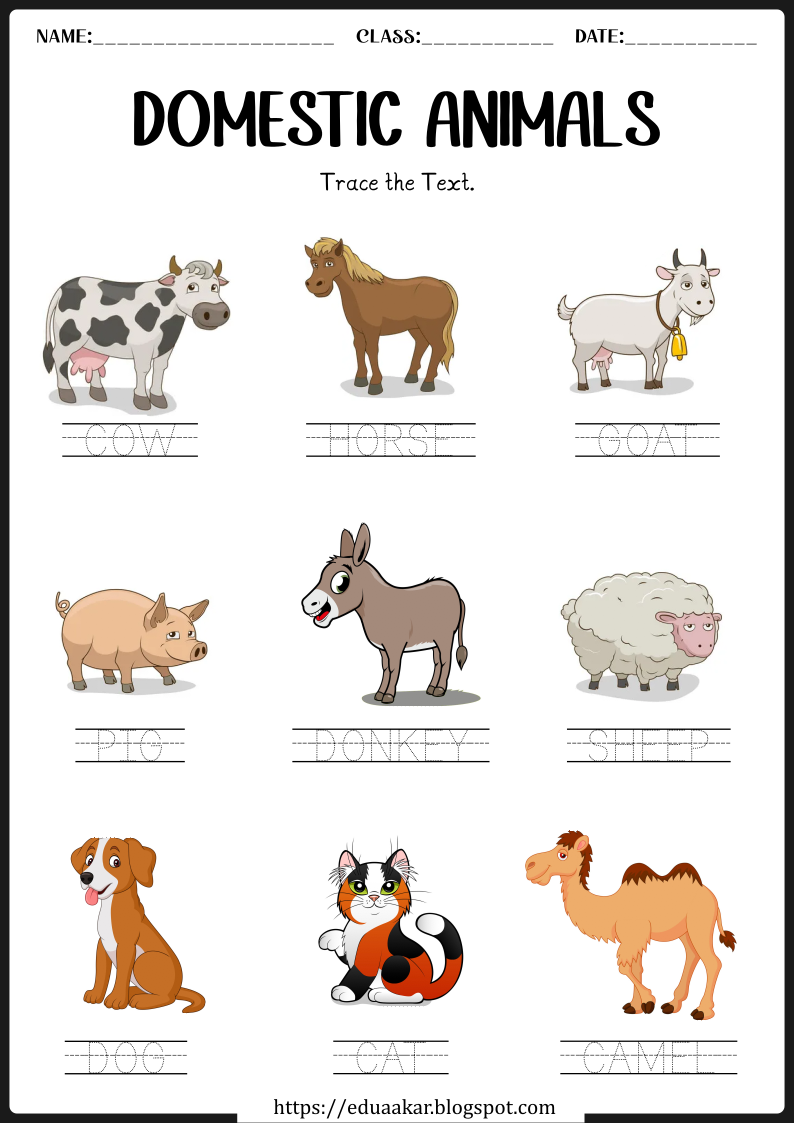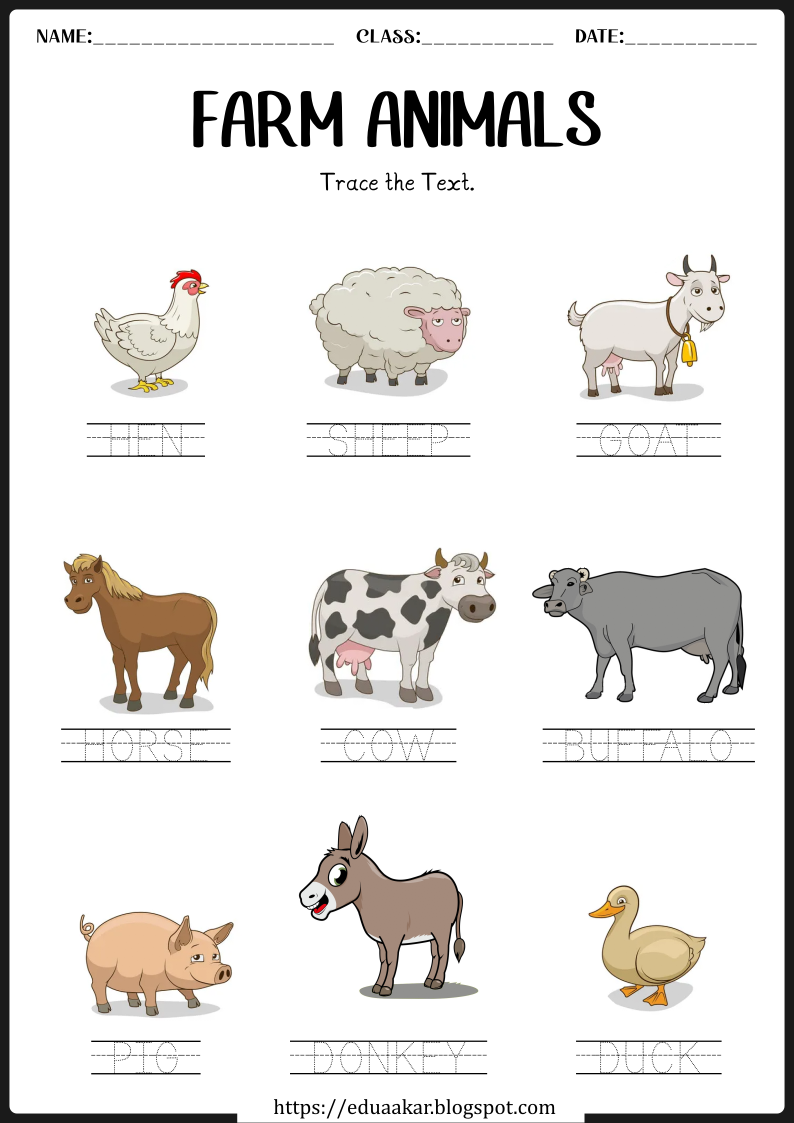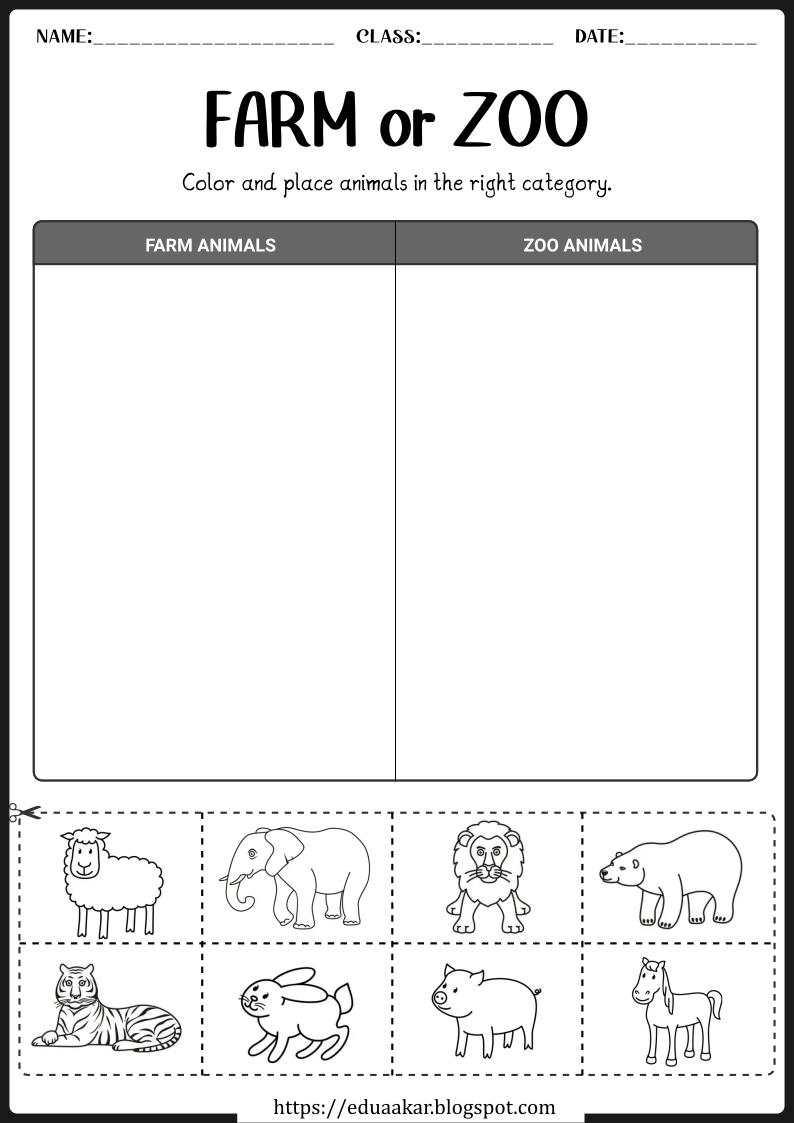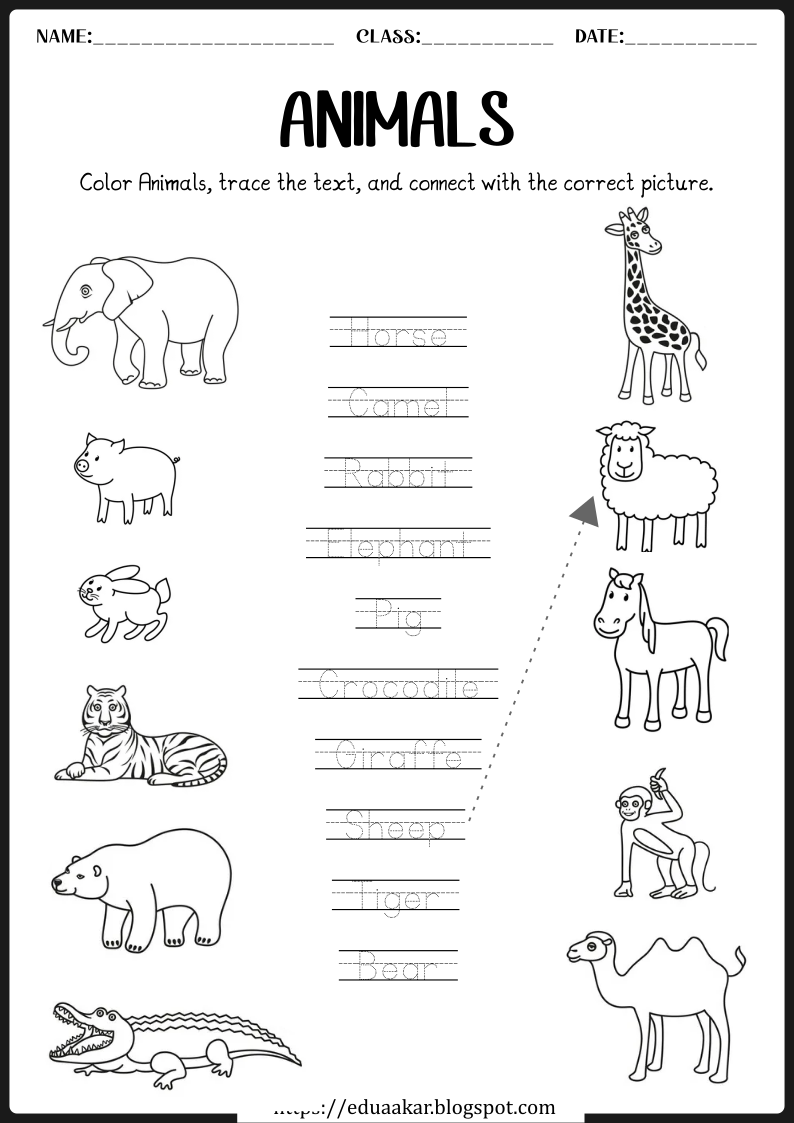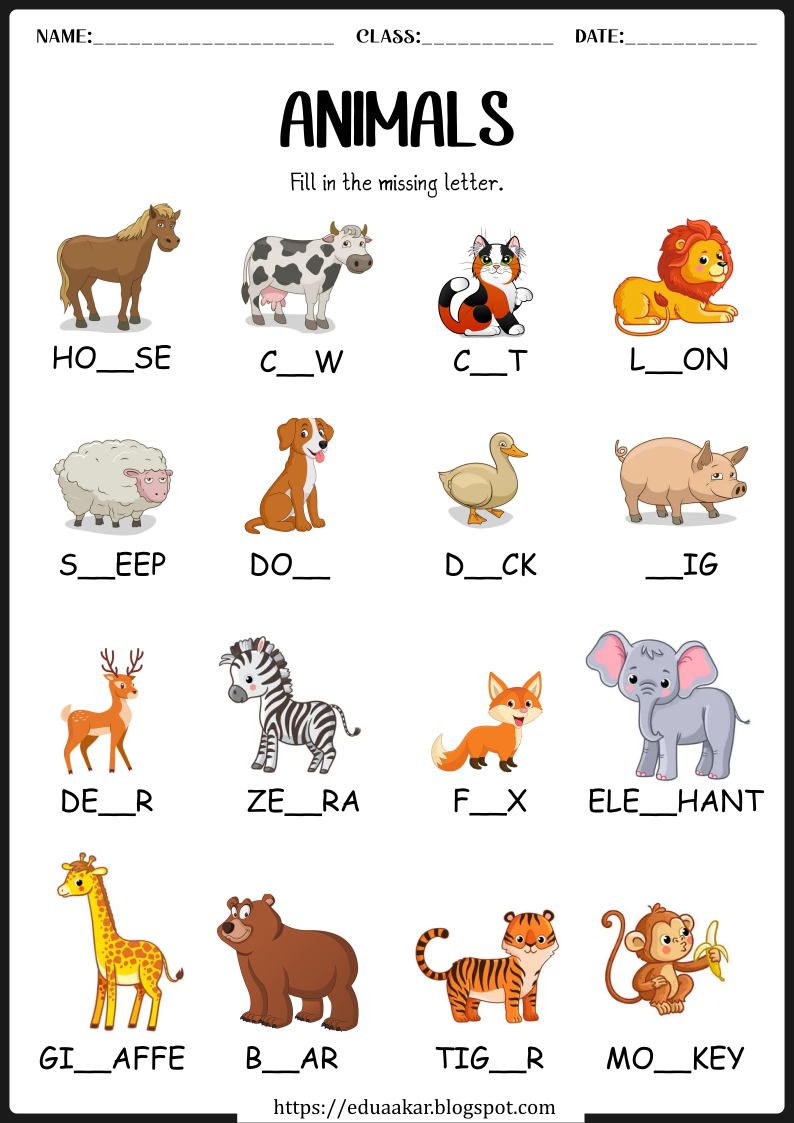Teaching children about animals is an important part of their early education. Not only do animals spark the curiosity and wonder of young learners, but they also provide opportunities for developing important skills such as observation, empathy, and critical thinking. In this article, we will discuss wild and domestic animals and their babies, adoption, how to teach about animals to kids, and activities related to animals. Additionally, we will provide a free worksheet that can be used to reinforce the concepts learned in this article.
Wild Animals and Their Babies
Let's start with wild animals. Lions, tigers, and bears are just a few examples of the many wild animals that kids are fascinated by. When teaching about wild animals, it's important to provide information about their babies as well. For example, did you know that a baby lion is called a cub, or that a baby elephant can weigh up to 260 pounds at birth? Providing pictures and fun facts about each animal can help engage young learners and spark their interest in the animal world.
Wild Animal List
The following table has a list of wild animals, how they sound, and their baby names:
| Animal Names | Sound | Baby Name |
|---|---|---|
| Lion | roar | Cub |
| Leopard | growl | Cub |
| Elephant | trumpet | Calf |
| Tiger | growl | Cub |
| Bear | growl | Cub |
| Deer | bell | Fawn |
| Wolf | howl, cry, yell | Pup |
| Fox | bark | Kit |
| Hippopotamus | growl | Calf |
| Rhino | grunt, growl | Calf |
| Monkey | chatter, gibber, whoop, screech | Infant |
| Kangaroo | growls, barking | Joey |
| Giraffe | bleat | Calf |
| Panda | squeak, growl, bark | Cub |
| Gorilla | roar, scream, hoot | Baby |
| Crocodile | bellow, hiss | Hatchling |
Domestic Animals and Their Babies
Domestic animals, such as dogs, cats, and horses, are more familiar to kids than wild animals. However, it's still important to teach kids about their babies and how they differ from their parents. For example, a baby dog is called a puppy, and a baby horse is called a foal. By providing pictures and fun facts about each animal, you can help kids understand the differences between the animals they see in their everyday lives.
Domestic Animal List
The following table has a list of Domestic animals, how they sound, and their baby names:
| Animal Names | Sound | Baby Name |
|---|---|---|
| Cat | mew, purr, meow | Kitten |
| Dog | bark | Puppy |
| Cow | low, moo | Calf |
| Goat | bleat | Kid |
| Sheep | bleat | Lamb |
| Donkey | bray | Colt |
| Pig | snort, grunt, squeal, oink | Piglet |
| Horse | neigh, snort, whinny | Foal |
| Buffalo | low, moo | Calf |
| Duck | quack | Duckling |
| Hen | cackle, cluck | Chick |
| Rabbit | squeak, drum | Bunny |
| Camel | grunt | Calf |
Adoption
Adoption is a concept that can be introduced to kids through animals. Teaching kids about animal adoption helps them understand the importance of caring for animals and fosters empathy and compassion. Activities such as visiting animal shelters and reading books about animal rescue can help kids learn about adoption and animal welfare.
How to Teach About Animals to Kids
Teaching kids about animals can be done in many ways. Hands-on experiences, such as visiting a farm or zoo, can help kids observe and interact with animals. Reading books about animals and watching documentaries can provide information about the different types of animals and their behaviors. It's also important to teach kids about the benefits of caring for animals, such as fostering environmental awareness and empathy for other living beings.
Activities
There are many fun and engaging activities that kids can do to learn about animals. For example, they can create animal masks using paper plates and craft materials. They can draw pictures of their favorite animals and label the body parts. They can also play animal-themed games, such as "What Am I?" where one person describes an animal and the other person tries to guess which animal it is.
Teaching kids about animals is an important part of their early education. By providing information about wild and domestic animals and their babies, adoption, and how to care for animals, kids can develop important skills such as empathy, critical thinking, and environmental awareness. By engaging in animal-related activities and completing the free worksheet provided in this article, kids can have fun while also learning about the fascinating world of animals.
Animals Worksheets
To reinforce the concepts learned in this article, we are providing a free worksheet that can be used in the classroom or at home. The following worksheets include tracing animal names, coloring pages of different animals, as well as questions about wild and domestic animals and their babies. By completing this worksheet, kids can practice their observation and critical thinking skills while also having fun.PDF Worksheets
You can download all the worksheets in PDF format from the following link. For more updates, you can follow us on Instagram and Pinterest.

